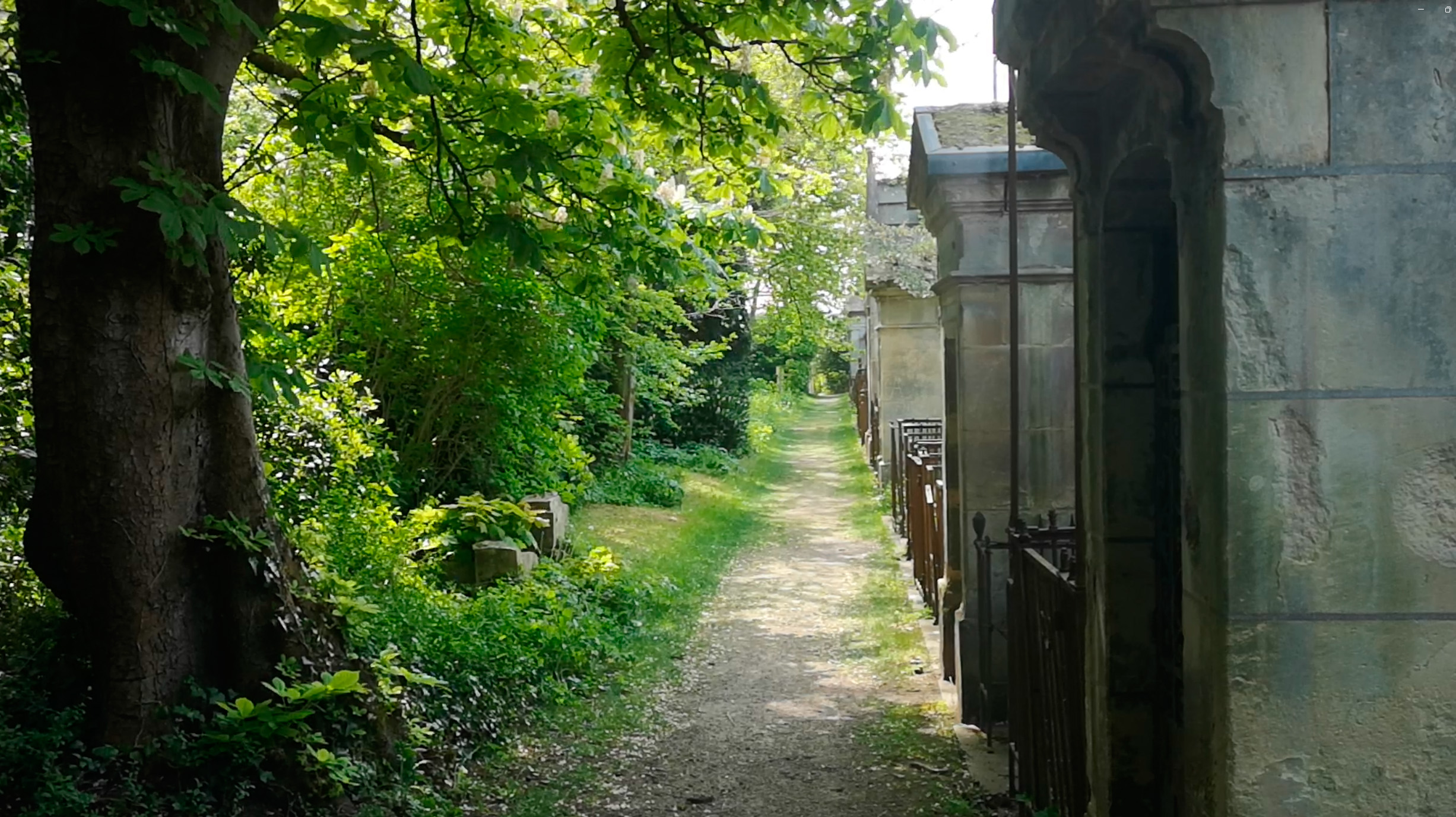Hello everyone, dear reader,
Bonjour à tous, cher lecteur,
Where there's a vampire story, there's a graveyard...
Qui dit histoire de vampire, dit forcément cimetière...
In the story of "Carmilla", a cemetery is mentioned at one point, serving as a backdrop for a number of events...
So I tried to find a way of depicting this mysterious, ancient atmosphere. Somewhere between romance and darkness.
I immediately thought of my home town, Caen, which has some very old, overgrown cemeteries.
So I went to the Church of Saint-Nicolas cemetery in Caen for this photograph.
Qui dit histoire de vampire, dit forcément cimetière...
Dans le récit de « Carmilla », un cimetière est évoqué à un certain moment, servant de toile de fond à quelques péripéties...
J'ai donc cherché comment représenter cette ambiance mystérieuse et ancienne. Entre romantisme et ténèbres.
J'ai tout de suite pensé à ma ville natale : Caen qui possède de très vieux cimetières envahis par la végétation.
Je me suis donc rendue au cimetière de l'Église Saint-Nicolas à Caen pour cette photographie.
The church was founded in the 11th century and is predominantly Romanesque in style. It now houses cultural events such as exhibitions and concerts.
C'est une église fondée au XIe siècle, de style majoritairement roman. Elle abrite aujourd’hui des éléments culturels tels que des expositions et des concerts.
In the 1880s, it looked like this:
Dans les années 1880 approximativement, elle ressemblait à ça :
At the foot of the church is the town's oldest cemetery, in use until the 19th century. Past the heavy entrance gate, small paths wind between the scattered tombs. "It's a chaos of steles and clumsy crosses, a small wood in the town centre with a strange atmosphere in the shadow of the old church".
Au pied de cette église se trouve le plus ancien cimetière de la ville, utilisé jusqu'au XIXe siècle. Passé la lourde grille d'entrée, de petits sentiers serpentent entre les tombes éparses. « C'est un chaos de stèles et de croix de guingois, un petit-bois en centre-ville avec une atmosphère étrange dans l'ombre de la vieille église ».
It's a place that's particularly dear to me, as I used to live right next door. I can't count the number of times I've taken refuge here in search of peace and quiet.
It's a place I know by heart and where I have so many memories !
I'm delighted to be able to introduce you to this place and immortalise it for 'Carmilla'.
C'est un endroit qui m'est particulièrement cher, car j’habitais juste à côté. Je ne compte pas le nombre de fois où je suis venue m'y réfugier pour chercher le calme et la tranquillité.
C'est un lieu que je connais par cœur et où j'ai beaucoup de souvenirs !
Je suis très contente de pouvoir vous présenter ce lieu et de l'immortaliser pour "Carmilla".
Me, a long time ago, in a galaxy far, far away...I was 16 years old.
I was already reading Le Fanu, but only Carmilla I think ...
Moi, il y a bien longtemps, dans une galaxie lointaine, très lointaine... J'avais 16 ans.
Je lisais déjà Le Fanu, mais seulement Carmilla je pense ...

I thought of this photo as something more contemplative. A landscape to get lost in the story, or in your thoughts...
Finally, a little nod to Le Fanu: normally, the cemetery would be in Styria. Which is simply impossible for me. But Normandy was just right in the end, because Le Fanu, although Irish, was of French origin, and even Norman! I feel like I've come full circle !
The name Le Fanu comes from the writer's Huguenot ancestors (the old name given to French Protestants of the Calvinist persuasion during the Wars of Religion), who emigrated from Caen to Ireland when the Edict of Nantes was revoked by King Louis XIV on 18 October 1685 (the Edict of Nantes was replaced by the Edict of Fontainebleau).
In 1815, Dean Thomas Philip Le Fanu, Joseph's father, was appointed rector at the Royal Hibernian Military School in Phoenix Park. Joseph received a private education from his father, who taught him French and English.
Cette photo, je l'ai pensé comme quelque chose de plus contemplatif. Un paysage pour se perdre dans le récit, ou dans ses pensées...
Pour finir, petit clin d'œil à Le Fanu : normalement, le cimetière devrait se trouver en Styrie. Ce qui m'est tout simplement impossible. Mais la Normandie allait très bien finalement, car Le Fanu, bien qu'Irlandais, était d'origine française, et même normande ! J'ai l'impression de boucler la boucle !
Le nom de Le Fanu vient des ancêtres huguenots (ancien nom donné aux protestants français d'obédience calviniste durant les guerres de religion) de l'écrivain, qui avaient émigré de Caen en Irlande, lors de la révocation de l'Édit de Nantes par le roi Louis XIV, le 18 octobre 1685 (l'Édit de Nantes fut remplacé par l'Édit de Fontainebleau).
En 1815, Dean Thomas Philip Le Fanu, le père de Joseph, est nommé recteur à la Royal Hibernian Military School, à Phoenix Park. Joseph reçoit une éducation privée, donnée par son père qui lui apprend le français et l'anglais.
Talk to you tomorrow, for the unveiling of the final illustration...
À demain, pour le dévoilement de l'illustration finale...




_-_2021-11-13_-_3.jpg)










.jpg)

A peaceful refuge that combines romance and darkness, the perfect place for a story like Carmilla 😍
ReplyDeleteMany Thanks !!!! :)
DeletePleins de souvenirs 🤗🤗
ReplyDelete